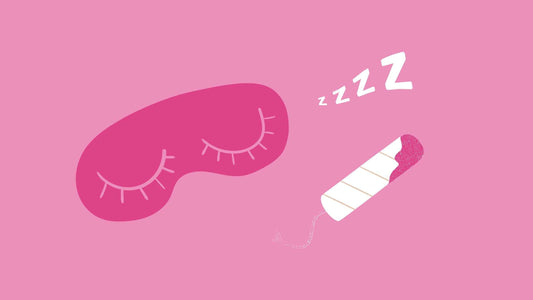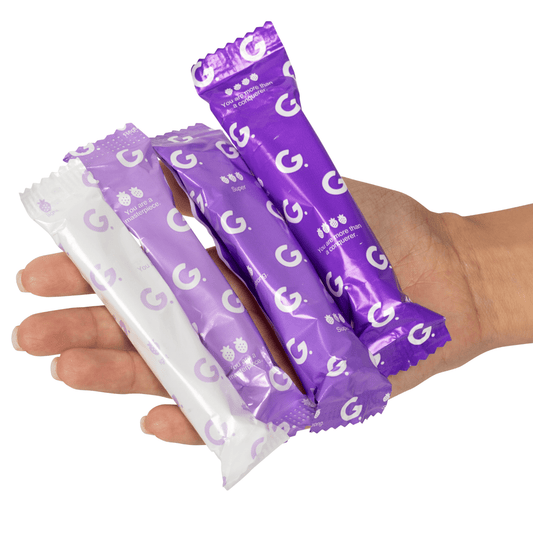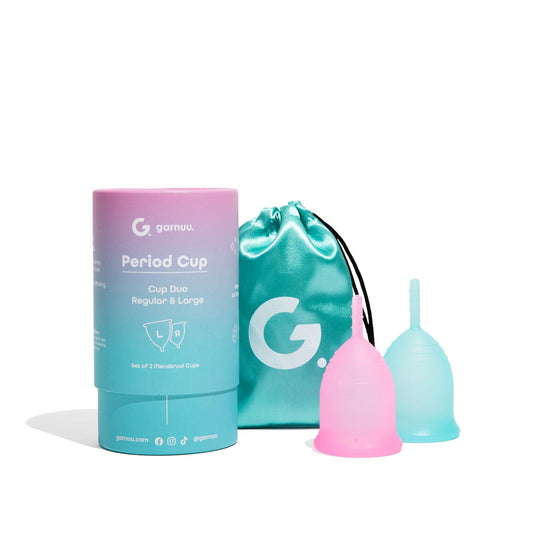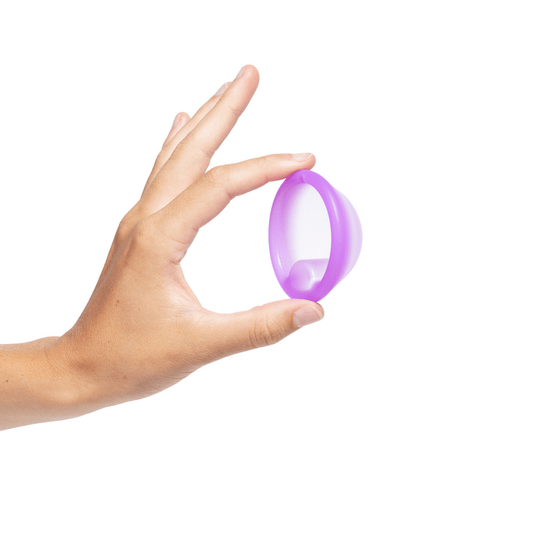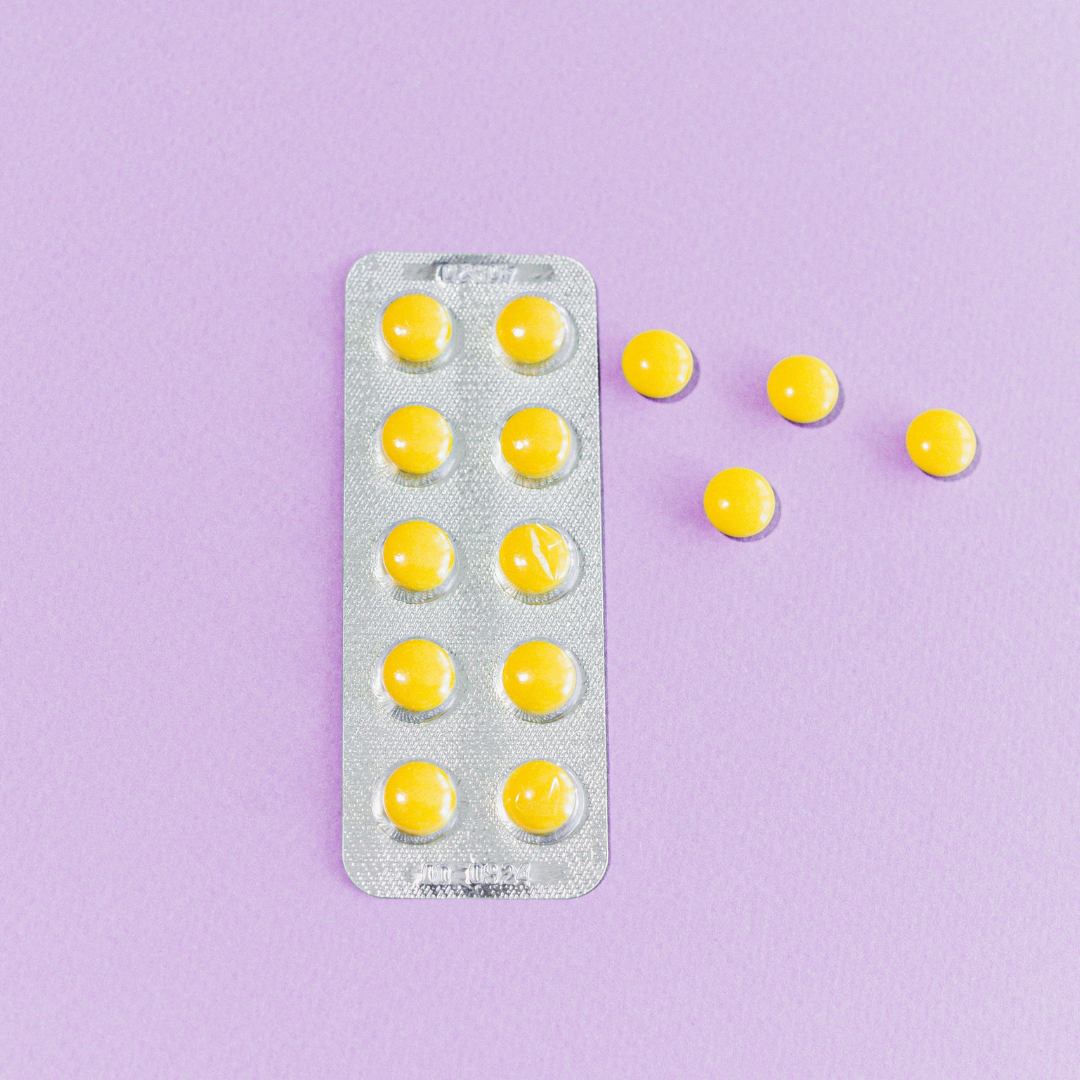
Non Hormonal Birth Control Options
Share
It's time to stop worrying about your birth control options.
With the increased concerns about birth control effects on women, many women are opting for a more natural non-hormonal method of contraceptives. And we're here for it!
Many non-hormonal contraception methods can be used by women and men, even those with allergies or ethical concerns!
In this blog post, we'll discuss the non-hormonal birth control options available and how they work. We'll also cover what non-hormonal birth control is and why it might be a good option for you or someone you know.
How birth control started

The first recorded use of birth control was in ancient Egypt, where women would use a mixture of crocodile dung and honey to prevent pregnancy.
However, for centuries, birth control was considered taboo and there weren't a lot of options available to both men and women on a public scale.
In 1960, the first hormonal contraceptive, Envoid, was approved by the FDA and began marketed as simply called "the pill".
Enovid had A LOT more hormones than it really needed to prevent pregnancy. It contained 150 micrograms of estrogen and 10,000 micrograms of progestin. It took scientists over a decade to figure out that the pill could be effective at preventing pregnancy with much smaller dosages. In comparison, today’s lower-dose pills are more likely to contain 20–50 micrograms of estrogen and 50–150 micrograms of progestin. The higher dosage caused severe side effects. In fact, 12% of women in the first few trials reported severe side effects that caused 25% of them to withdraw from the study altogether.

Since then, various methods have been developed and used over the years. In 2021, in North America, 69% of women aged 15 to 49 years old use birth control.
Today, non-hormonal contraception methods account for about 28% of all contraceptives used in the US. There are two types of birth control pills, combination pills and progestin-only pills. Combination pills have--you guessed it--a combination of the hormones estrogen and progestin. Combination pills have been commonly the most popular type of pill birth control. However, there's a new kid on the block and her name is non-hormonal birth control.
What is non-hormonal birth control?
Non-hormonal birth control is any non-medication-based method of preventing pregnancy that does not contain hormones. Like most other birth control methods, nonhormonal contraceptives are used by women and men to prevent unplanned pregnancies.
Why use non-hormonal birth control?

There are many reasons people choose non-hormonal birth control over hormonal methods. For some, it is purely an ethical reason as they do not want to use a hormone-based contraceptive because of the negative effects hormones can have on women's bodies, minds, and the potential life they would be trying to prevent. Others may be looking for different birth control methods due to allergies or other health concerns that would prevent them from using hormonal birth control. Or like most women, we just don't want to deal with all the negative side effects of hormonal birth control.
What are the negative side effects of hormonal birth control?
The obvious and immediate negative side effects of hormonal birth control can include nausea, vomiting and diarrhea.
But some hormonal birth control stops ovulation and/or your period from occurring at all.
Your menstrual cycle has become a 5th vital sign of health for women and when not all of the phases occur problems may come up.
many women are reporting that it is taking much longer to conceive after coming off hormonal birth control or it's causing fertility issues more than likely because they have been on birth control for over a decade.
Many non-hormonal birth control options don't have these same side effects.
Non-Hormonal Birth Control Options for Women
What non-hormonal birth control methods are there? Several non-hormonally based contraceptive options won't affect your natural female hormonal makeup.
A male condom
Male condoms are among the oldest forms of birth control. Dating back to the ancient Egyptians. The first recorded use of a male condom in modern history was in 1564 in Europe. Condoms were primarily used to prevent against STD's in Europe. Since contracting one would prove to be fatal. They were very popular among middle to upper classes. Condoms finally became accessible to working classes in the 19th century when rubber was discovered by Mr. Goodyear in 1839.
Male condoms are a great non-hormonal option for couples. When male condoms are used correctly they are 98% effective or that 2 out of 100 people will become pregnant. Those are great odds!
Different types of male condoms
Latex: latex condoms have been the standard non-hormonal birth control option for over a century. Latex condoms should only be used with water or silicone-based lubricant NOT oiled based lubricant.
Lambskin: Lambskin condoms don't prevent against STDs or STIs however they can be used with water, silicone, or oil-based lubricants.
Polyurethane and synthetic: these non-latex condoms are more durable than latex and can be used with oil-based lubricant.
A Female Condom

The female condom dates way before male condoms existed—the ancient Greek legend of Minos describes the use of an internal condom made out of a goat's bladder for females. The first modern description of a female condom was in 1907, in a patent for a method of collecting animal semen for breeding. So not necessarily for female contraception.
Female condoms may also protect against pregnancy and STDs/STIs, though not to the same degree of effectiveness as male condoms for this purpose.
Female condoms are made of polyurethane or nitrile and placed inside the vagina during intercourse.
Female condoms are a little less effective than male condoms however with perfect use, they are 95% effective.
Diaphragm or Cervical Caps
Non-hormonal diaphragms and cervical caps is another birth control method used to prevent pregnancy.
Cervical Caps must be fitted by a doctor; often made of latex, silicone or plastic; provide no protection against STDs/STIs, and should not be left inside the vagina for more than 30 hours.
Both of these options can be a hassle, you can put it in up to 6 hours before engaging in intercourse and you have to leave it in for 6 hours after intercourse before removing it.
Diaphragms and cervical caps are 94% effective in preventing pregnancy accompanying a spermicide gel. Most people make mistakes since this is a more complicated method of contraceptive which is about 72% effective.
Sponge
A sponge is filled with spermicides (activated by water) and placed in the vagina before intercourse. It also must be left inside a woman for 6 hours after sex, but don't leave it in for more than 30 hours total.
Due to the size of the sponge and the size of the vagina women who have previously given birth have a 73% effective rate, but it's 86% effective for women who have not given birth.
Creams, Foams, and suppositories
These non-hormonal contraceptives are inserted into the vagina before sex and contain a chemical that kills sperm on contact.
They can be used with barrier methods like condoms or diaphragms, but you should use your non-barrier method first to protect against STD/STI transmissions.
Using spermicide alone without any other barrier options can be 70-80% effective.
They can cause irritation and there are some ethical concerns about the spermicide killing the sperm.
If a cream-based birth control method seems like a good option for you, do your research to make sure it's the best option for your body.
Natural Family Planning Method or Fertility Awareness Method (FAM)
Natural family planning or fertility awareness is a birth control method that requires women to track their menstrual cycle and changes in cervical mucus.
Basically the same thing as tracking your period, but instead of using tampons you can use non-hormonal devices like calendars, charts, thermometers, or even apps on your phone which are all available and effective options.
Natural family planning methods are up to 99% effective in perfect use.
You will need to consistently practice this method for quite a few months to get a good idea of your cycle and ovulation patterns.
We're big fans of this method because you get to know more about your body every month and have a better understanding of it.
Types of FAMs
There are various FAMS and each has its own rules. There are numerous fertility apps aimed at tracking your fertile window. Much of the fertility apps available have better technology that aids in making more accurate predictions for your cycle.
These are some helpful products to help you with your Fertility Awareness Methods:
Ava Women
Ava Women is a watch that you wear only during sleep. It tracks 5 physiological signals and uses machine learning algorithms to extract from this data the 5 most fertile days of the menstrual cycle.
Natural Cycles
Natural Cyles Natural Cycles tracks your fertility with a basal body temperature thermometer you take every day.
They claim to be 93% effective.
Withdrawal
This non-hormonal contraceptive method involves a man "pulling out" of the vagina before he ejaculates.
Withdrawal is only 78% effective if used perfectly, but because it relies on self-control and consistent timing there are many cases where it will not be as effective.
It is still a non-hormonal option!
Copper IUD

This contraceptive method involves a small piece of copper that gets placed into the uterus by your doctor.
It can be kept in for up to ten years and is effective at preventing pregnancy immediately, but it also has health benefits like getting rid of painful periods or heavy flow.
Copper IUDs don't impact ovulation at all so you still ovulate.
You do also get a period. Some women experience heavier or longer periods as well as some unscheduled spotting or bleeding during the first couple of months of use.
It is 99% effective. The only non-hormonal birth control option with this level of effectiveness.
Breastfeeding (lactational amenorrhea) or LAM
Breastfeeding your baby can help to prevent pregnancy due to a hormone that isn't usually released called onadotropin-releasing hormone (GnRH), preventing the surge of luteinizing hormone (LH).
Without the LH surge, ovulation doesn’t occur.
This non-hormonal contraceptive method is more effective for those who have been breastfeeding their babies exclusively since the birth of the child, but it's 99% effective as long as you follow some guidelines:
-You must breastfeed your baby exclusively every 4 hours throughout the day and every 6 hours at night (no formula supplementation).
-LAM can be used up to 6 months after the birth of your child or until your period comes back.
Disclaimer: This doesn't always fully work for every woman. Once her period comes back all bets are out the window.
What is Phexxi?

With all the new commercials talking about the new non-hormonal birth control, Phexxi, we had to mention it at least!
Phexxi is a new non-hormonal birth control product approved in September 2020 that is a vaginal gel. You only need to insert it when you need it. It kinda looks like a tampon too.
You do need a prescription for it. Phexxi doesn't protect against any STDs or STIs.
Phexxi is made with lactic acid, citric acid, and potassium bitartate.
You should insert Phexxi immediately before or up to 1 hour before intercourse. You do need to apply it every time you have intercourse.
Women claim mostly irritation as a side-effect.
Phexxi is supposedly 86% effective. We haven't tried it yet, but we had to mention it, since it claims to be the non-hormonal birth control option for women!
Abstinence
Lastly, we had to throw this one in here. This is the most effective form of birth control! And it works 100% of the time. Hands down! Whether it's useful or not--it's still an option for you to consider.
100% effective too.
What is the best form of birth control?
There is no simple answer here. The answer is whatever works best for you and your body--and your convictions. If you feel an IUD is best for your situation do it. If you feel condoms are better for you--do it. If you feel abstinence is better for you--do it!
Whatever your choice of contraceptive, make sure you research it thoroughly and listen to your body. You've been given one body while you're here on earth, so make sure you make the most of it!
Now that's a lot of birth control!
We hope this article has helped you to learn more about the nonhormonal birth control options available to women.
If not, hopefully, it's provided some food for thought.
Regardless of your decision on what type of contraception is best for you, know that there are many safe and reliable methods out there!
While you're here, you should try some organic period care products too! :)
About Garnuu
At Garnuu, we do periods that don't cramp your style. Get your 100% organic tampons and menstrual cups delivered to your door all while fighting human trafficking as you do it!
DISCLAIMER: This content was written for informational purposes to educate women only. It is not medical advice.



